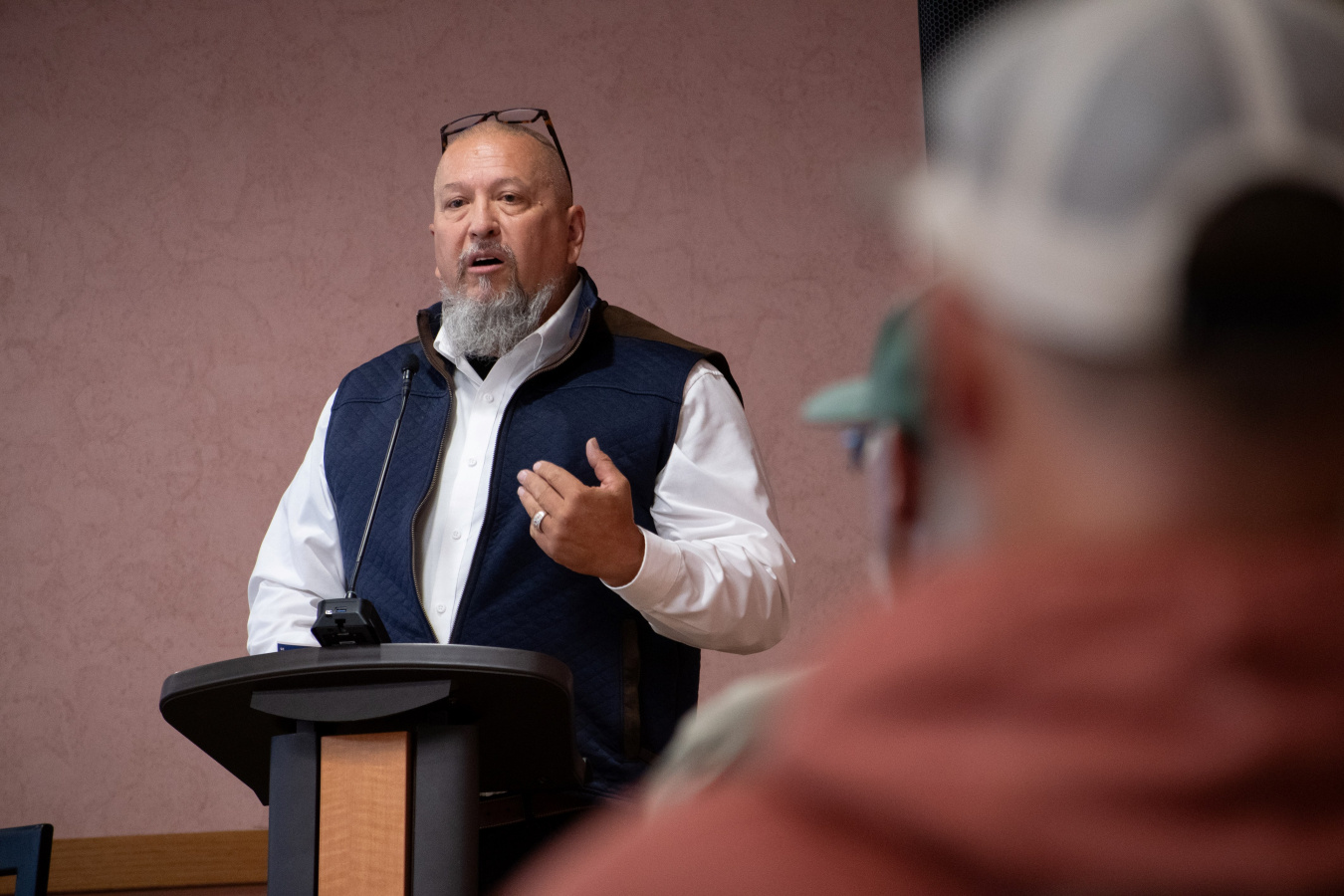Protecting water supplies is a key priority of the Los Alamos National Laboratory (LANL) legacy cleanup mission. June 24, 2025.
Office of Environmental Management
June 24, 2025Senior officials with the U.S. Department of Energy Office of Environmental Management Los Alamos Field Office and legacy cleanup contractor Newport News Nuclear BWXT-Los Alamos LLC provide responses during the public Q&A period at the Environmental Management Cleanup Forum.
Comprehensive sampling and monitoring program outlined at public forum
LOS ALAMOS, N.M. — Protecting water supplies is a key priority of the Los Alamos National Laboratory (LANL) legacy cleanup mission.
Earlier this month, senior officials from the U.S. Department of Energy (DOE) Office of Environmental Management Los Alamos Field Office (EM-LA) and its cleanup contractor stated that they have instituted a robust monitoring and remediation program.
“My priority has been and remains to be ensuring that the legacy cleanup mission is implemented safely, efficiently, effectively and transparently,” EM-LA Manager Jessica Kunkle said at an Environmental Management Cleanup Forum held June 12.
“It is my goal to continue to be transparent with EM-LA’s engagements and share progress on our priority cleanup work, including our legacy waste operations, as well as our soil and water investigation and remediation,” Kunkle added.
Newport News Nuclear-BWXT-Los Alamos LLC (N3B), the legacy cleanup contractor at LANL, has instituted a comprehensive approach to protecting water quality that includes monitoring and managing various water supplies, along with addressing contaminated soils that could pose a threat, according to N3B acting Environmental Remediation Program Manager Vince Rodriguez.

Vince Rodriguez, acting Environmental Remediation program manager for legacy cleanup contractor Newport News Nuclear BWXT-Los Alamos LLC, provides a comprehensive overview on keeping water supplies protected for the Los Alamos National Laboratory legacy cleanup mission.
Protecting Water Quality and Addressing Groundwater Plumes
“Protecting the water supply is the ultimate goal,” Rodriguez said. “What we are doing — working with DOE, N3B, the pueblos — and the actions that we are taking ensures that the water quality is protected at all times.”
One aspect of the LANL legacy cleanup mission focuses on addressing two groundwater plumes: a hexavalent chromium plume and the royal demolition explosives plume, according to Rodriguez. While neither plume currently threatens offsite water supplies, EM-LA and N3B are working to monitor and control potential migration while cleanup remedies are developed.
For the hexavalent chromium plume, EM-LA and N3B are using an interim measure, a pump-and-treat system that has treated almost 460 million gallons of groundwater since May 2018, Rodriguez said.
Today, the interim measure is running 24 hours per day, seven days a week, Kunkle said, praising the system’s performance.
“Since partial restart of the interim measure in September 2024, chromium concentrations at and near monitoring wells have shown significant decrease based on the latest May sampling data,” she said.
Soil Cleanup Progress
To help prevent water contamination, EM-LA and N3B work to address legacy soil contamination through LANL’s 34 “Aggregate Areas,” each of which is within a single watershed or canyon. Aggregate Areas contain Solid Waste Management Units (SWMUs), where waste was placed, and/or Areas of Concern (AOCs), which may have had a release of hazardous waste or hazardous constituents. Since May 2018, 435 SWMUs or AOCs have been investigated and, if necessary, remediated, Rodriguez said.
Currently, there are more than 480 SWMUs and AOCs in the Aggregate Areas that have received certificates of completion from the New Mexico Environment Department (NMED), and another 120 requests for certificates of completion are pending with NMED.
More Than 48,000 Samples Collected Since Legacy Cleanup Contract Began
N3B also conducts sampling and monitoring for water, soil and vapor to provide critical insight into the effectiveness of various cleanup approaches and to determine the extent of contamination. Since the start of N3B’s contract in May 2018, more than 48,000 water, soil and vapor samples have been collected, Rodriguez said, adding that the summer sampling includes a four-day raft trip along the Rio Grande River.
N3B’s sampling program helps demonstrate that “our stormwater and engineering control systems are working,” Rodriguez said. “It also confirms that cleanup is effective. Any time you do a cleanup, you’re going to do confirmation. That is the goal here: to ensure whatever we’re cleaning up, we’re cleaning it to a point that meets the applicable standards. Whether it’s through air, whether it’s through water, or whether it’s through soil, that’s what sampling tells us.”
-Contributor: Michael Nartker
To receive the latest news and updates about the Office of Environmental Management, submit your e-mail address.

